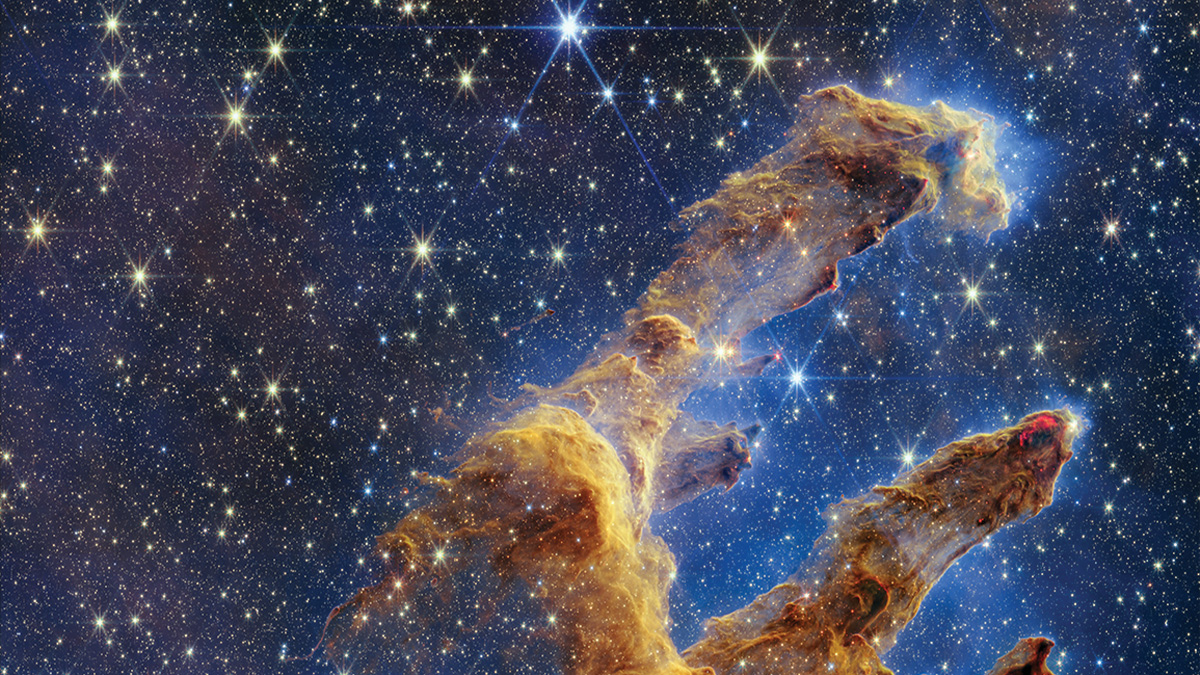NASA revealed a stunning, start-filled image of the iconic “Pillars of Creation”, a scene of three looming towers made of cosmic dust and hydrogen gas teeming with newly formed stars in the Serpens constellation, captured by the James Webb Telescope.
The vista was made famous by the Hubble observatory in 1995 and 2014.
James Webb Telescope has given us yet another incredible perspective with its infrared detectors.
The pillars lie at the heart of what astronomers refer to as Messier 16 (M16), or the Eagle Nebula, an active star-forming region.

Webb, with its infrared detectors, can see past much of the light-scattering effects of the pillars’ dust to examine the activity of the new-born suns.
“Along the edges of the pillars are wavy lines that look like lava. These are ejections from stars that are still forming,” NASA said in a statement.
“Young stars periodically shoot out jets that can interact within clouds of material, like these thick pillars of gas and dust,” the US space agency added.
These pillars are being illuminated and shaped by the intense ultraviolet light from massive nearby stars. That radiation is also destroying the towers.
We only see them because we’re looking at them in the past. The light that Webb detects has taken 6,500 years to reach its mirrors.
The so-called “Pillars of Creation” are located some 6,500 light years from Earth in the Eagle Nebula of our Milky Way galaxy.






Leave a Reply